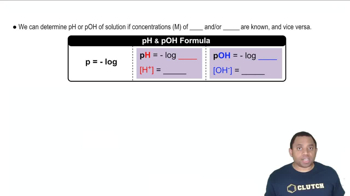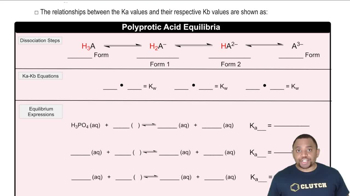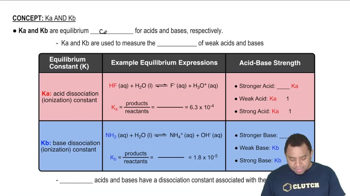Determine the pH of each two-component solution. d. 0.088 M HClO4 and 0.022 M KOH
The pH of a 1.00 M solution of urea, a weak organic base, is 7.050. Calculate the Ka of protonated urea.
 Verified step by step guidance
Verified step by step guidance
Verified video answer for a similar problem:
Key Concepts
pH and pKa Relationship

Acid-Base Equilibrium

Dissociation Constant (Ka)

Write net ionic equations for the reactions that take place when aqueous solutions of the following substances are mixed: a. sodium cyanide and nitric acid b. ammonium chloride and sodium hydroxide c. sodium cyanide and ammonium bromide d. potassium hydrogen sulfate and lithium acetate e. sodium hypochlorite and ammonia
Morphine has the formula C17H19NO3. It is a base and accepts one proton per molecule. It is isolated from opium. A 0.682-g sample of opium is found to require 8.92 mL of a 0.0116 M solution of sulfuric acid for neutralization. Assuming that morphine is the only acid or base present in opium, calculate the percent morphine in the sample of opium.
Lactic acid is a weak acid found in milk. Its calcium salt is a source of calcium for growing animals. A saturated solution of this salt, which we can represent as Ca(Lact)2, has a [Ca2+] = 0.26 M and a pH = 8.78. Assuming the salt is completely dissociated, calculate the Ka of lactic acid.
